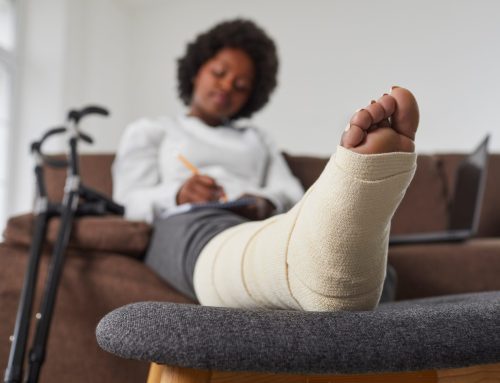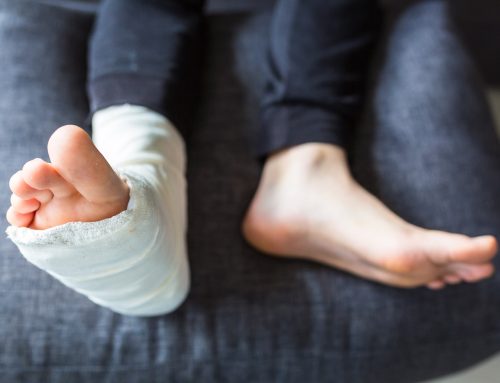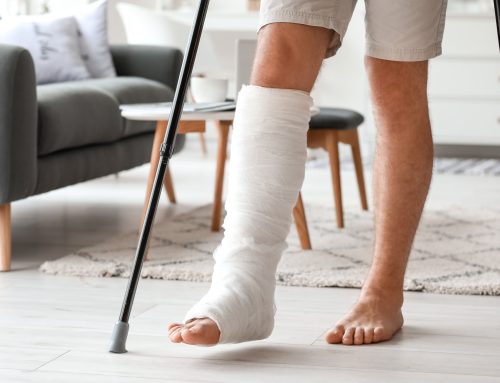The human skeleton, a marvel of strength and flexibility, is not impervious to the trials of life. Bones, the framework supporting our daily movements, can succumb to the forces of accidents or wear and tear. In this exploration, we uncover the most common causes of broken bones and embark on a journey to understand how to shield this intricate structure from harm. From the mundane to the unexpected, fractures can occur to anyone. Join us as we unravel the mysteries behind broken bones, shedding light on preventative measures that empower individuals to safeguard their skeletal well-being.

Common Causes of Broken Bones
From the simple missteps that characterize accidental slips and falls to the risks inherent in the pursuit of physical excellence through sports, fractures can occur when we least expect them. In this exploration, we unravel the threads connecting these common causes of broken bones, offering insights into preventative measures that empower individuals to fortify their skeletal fortress. Join us as we delve into the intricacies of these causes, shedding light on how awareness and preventive measures can pave the way to skeletal well-being.
1. Accidental Slips and Falls: Treading Carefully
Accidents happen when we least expect them, often in the form of slips and falls. Whether on slippery surfaces, uneven ground, or tripping hazards, a momentary lapse in attention can lead to fractures. Older people, in particular, are vulnerable to fractures from falls due to reduced bone density. To avoid such mishaps, it's crucial to maintain a vigilant eye on surroundings, use proper footwear, and ensure well-lit and clutter-free living spaces.
2. Sports-Related Injuries: A Double-Edged Sword
The thrill of sports comes with a potential downside – sports-related injuries. From fractures sustained during high-impact sports like football to stress fractures from repetitive motions in the running, athletes face a spectrum of bone-related challenges. Adhering to proper warm-up routines, using protective gear, and embracing cross-training can significantly reduce the risk of fractures in the athletic realm.
3. Vehicular Accidents: The Impact of Collisions
Vehicular accidents, whether on the road or in recreational activities like biking or skateboarding, can exert immense force on bones. Fractures resulting from such impacts may vary in severity. Wearing appropriate protective gear, obeying traffic rules, and practicing defensive driving can be instrumental in averting fractures in vehicular mishaps.
4. Osteoporosis: The Silent Culprit
Osteoporosis, characterized by weakened bones, can turn routine activities into potential fracture risks. With diminished bone density, even a minor fall can lead to fractures. Adequate calcium intake, regular weight-bearing exercises, and preventive measures like fall-proofing living spaces become essential in fortifying bones against osteoporosis-related fractures.
5. Workplace Mishaps: Navigating Occupational Hazards
Certain professions expose individuals to specific bone injury risks. Construction workers, for instance, may encounter fractures due to falls from heights or accidents involving heavy machinery. Adhering to safety protocols, using protective equipment, and regular training can mitigate the risk of workplace-related fractures.
6. Age-Related Fragility: Safeguarding the Elderly
As individuals age, bones tend to become more fragile, making them susceptible to fractures, especially in the hip, spine, and wrist. Simple activities like stepping off a curb or navigating stairs can pose challenges. Regular exercise, a balanced diet rich in calcium and vitamin D, and home modifications to reduce fall risks are crucial in preserving bone health for older people.
7. Overexertion and Repetitive Stress: Balancing Act
Overexertion and repetitive stress can lead to stress fractures, especially in weight-bearing bones. Athletes engaging in intense training regimens or individuals with physically demanding occupations may be prone to such fractures. Ensuring adequate rest, proper technique, and incorporating cross-training into fitness routines can prevent fractures stemming from overexertion.
Protecting the Framework: Tips for Avoiding Broken Bones
Understanding the common causes of broken bones is the first step in fortifying our skeletal fortress. Here are some practical tips to minimize the risk of fractures in daily life:
Prioritize Safety Gear
Use helmets, knee pads, and other protective gear in sports and recreational activities.
Wear seat belts and use appropriate safety equipment in vehicular pursuits.
Strengthen Bone Health
Consume a diet rich in calcium and vitamin D for optimal bone density.
Engage in weight-bearing exercises like walking, jogging, or weightlifting to enhance bone strength.
Create Safe Environments
Remove tripping hazards in living spaces and ensure proper lighting.
Install handrails and non-slip mats in areas prone to falls, like bathrooms and stairs.
Stay Active with Caution
Embrace physical activities, but be mindful of your body's limits.
Incorporate low-impact exercises like swimming or cycling to reduce stress on joints.
Regular Health Check-ups
Monitor bone health, especially for individuals with conditions like osteoporosis.
Address underlying health issues that may contribute to bone fragility.
As we navigate the intricate web of common causes of broken bones, the thread of prevention weaves through every scenario. Bone health is a collective effort involving personal awareness, lifestyle choices, and preventive measures. By understanding the risks and embracing proactive strategies, individuals can embark on a journey to fortify their skeletal framework, fostering resilience and longevity. In the realm of bone health, prevention is not just the best cure—it's the key to an enduring and unbroken future.
The healing process can feel prolonged and frustrating if you have suffered a break. You can take charge of faster healing with the low-intensity pulsed ultrasound device Canadians turn to. Learn more about the device and how it can help you return to pre-injury living sooner.
What surprised you the most about the common causes of broken bones? Are you proactive when it comes to break prevention? Share your thoughts with our readers in the comments below.





